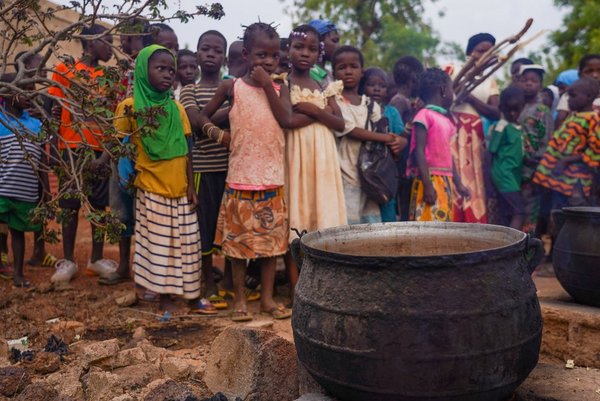 Read this article in French
Read this article in French- Share this article
- Subscribe to our newsletter
Progress in tackling hunger world-wide has largely stalled
Following years of progress in reducing hunger since 2015, the world is now hardly moving on. This is reflected in the Global Hunger Index (GHI), published by Welthungerhilfe and Concern International in October 2023.
Despite many political pledges and international conferences, a reversal of the trend has still not since been achieved. The report looks at the food situation in 136 countries. While 43 countries continue to display a very serious or serious hunger level, in 18 countries, hunger has further risen since 2015. A total of 58 countries are not going to succeed in reaching a low level of hunger by 2030. Sub-Saharan Africa and South Asia are once again the regions with the highest rates of hunger.
Nine countries in this year’s report are experiencing “alarming” levels of hunger. They are: Burundi, the Central Africa Republic, the Democratic Republic of Congo, Lesotho, Madagascar, Niger, South Sudan, Somalia and Yemen.
The report shows that progress against hunger world-wide has largely stalled, with 14 countries with moderate, serious or alarming hunger scores showing improvements of less than five per cent this year compared to 2015.
Multiple crises such as the rise in food prices, which has been further aggravated by the Russian war of aggression against Ukraine, the economic impacts of the Corona pandemic, climate change and more and more armed conflicts are amplifying each other and resulting in around three quarters of a billion people going to bed hungry every day. This is affecting young people, and especially young women, in particular.
However, despite the global challenges, some countries have continued to make progress in reducing hunger since 2015, including Bangladesh, Chad, Djibouti, Lao PDR, Mozambique, Nepal and Timor-Leste.
The Global Hunger Index 2023 also focuses on the future food needs of the world’s current young population – the majority of whom live in low- and middle-income countries in South Asia, East Asia and Africa. Currently, 42 per cent of the world’s population is aged under-25.
“They are emerging into adulthood in a context of inherently unequal and unsustainable food systems that fail to deliver food and nutrition security and are highly vulnerable to climate change and environmental degradation,” the young academics Wendy Gexa and Mendy Ndlovu from the University of KwaZulu-Natal, South Africa state. In their essay, commissioned for the report, they warn that young people are inheriting food systems which are failing on multiple fronts.
(Welthungerhilfe/Concern International/ile)
More information:





Add a comment
Be the First to Comment